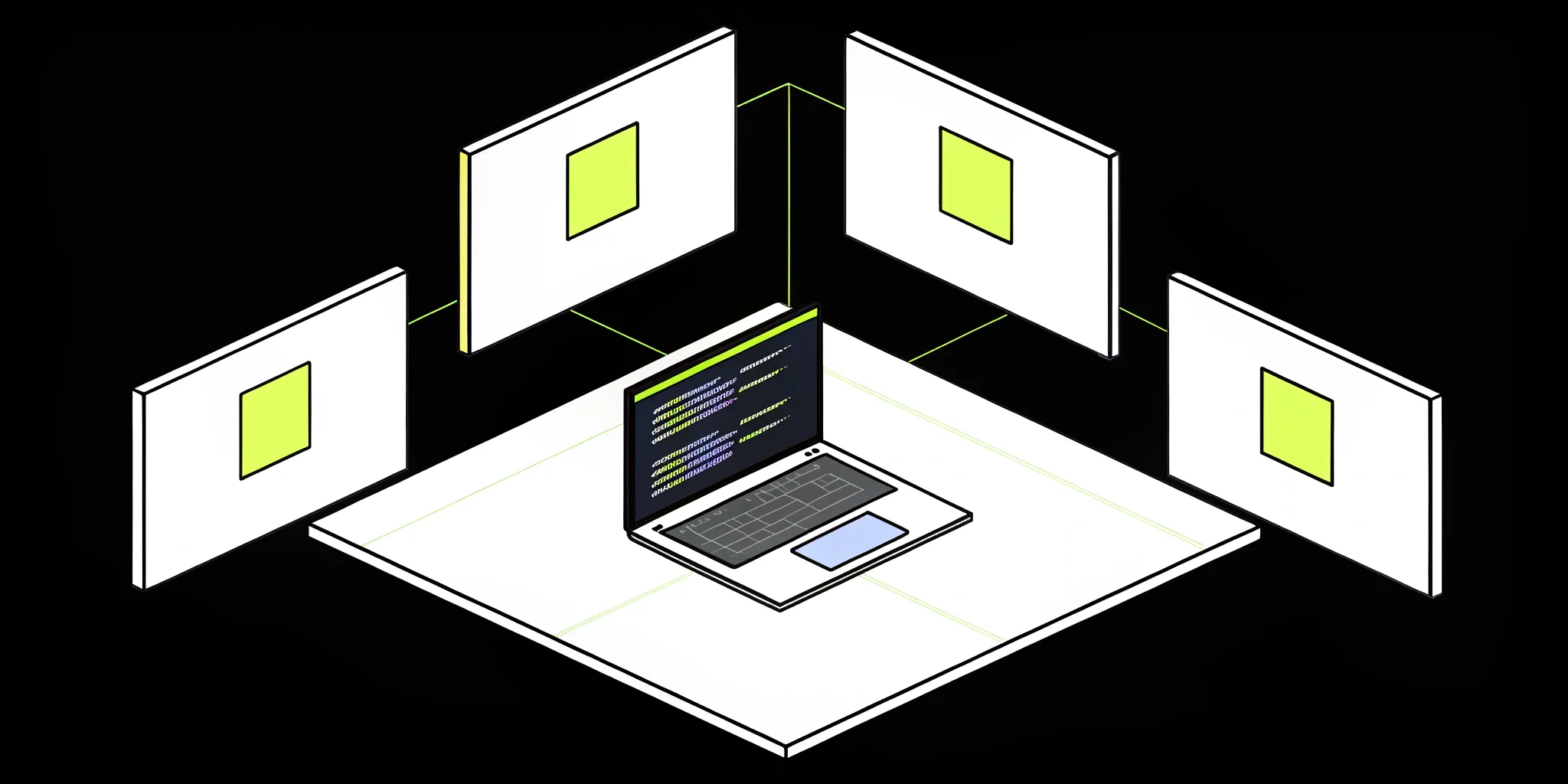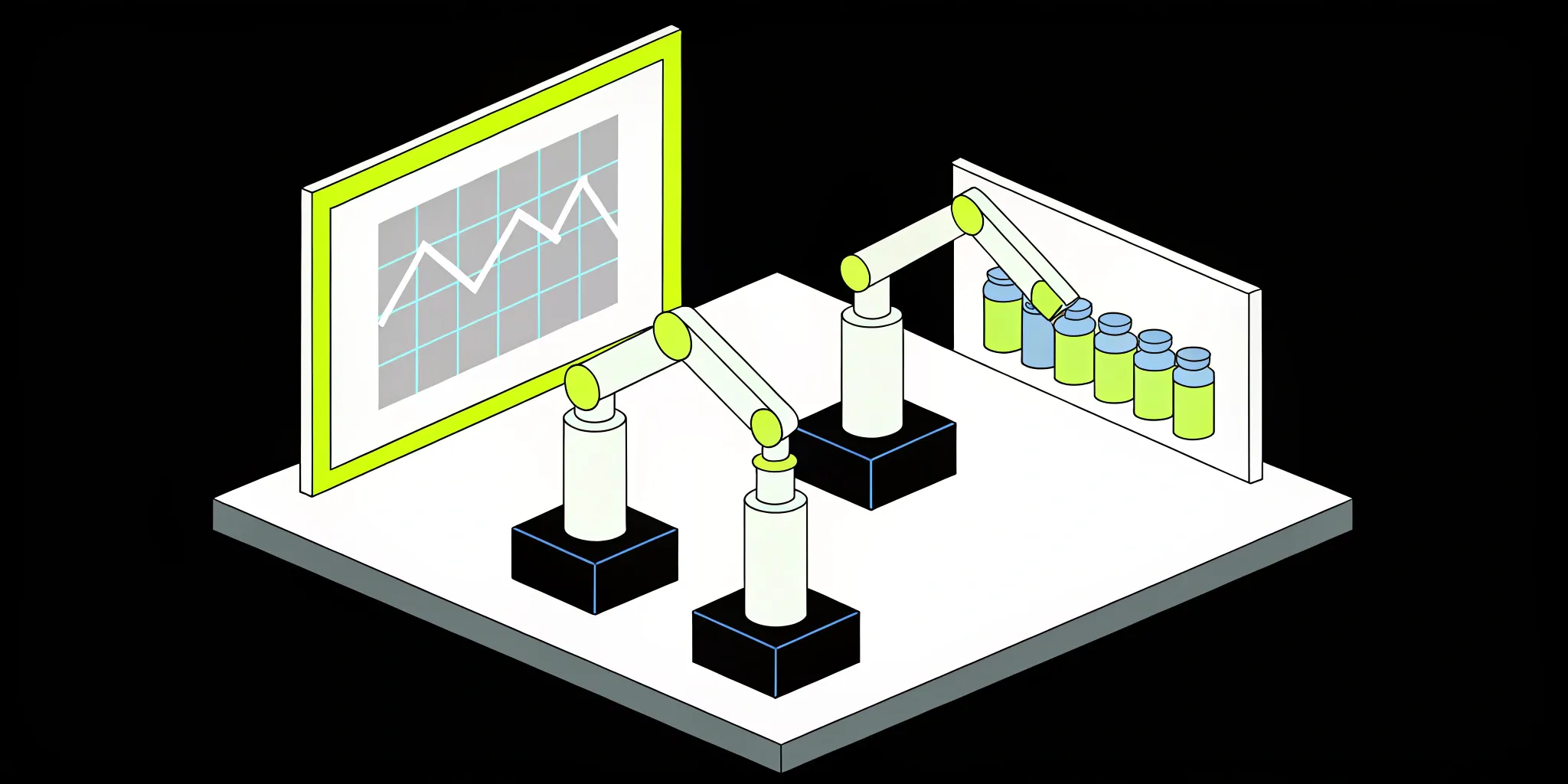The Best Open-Source Tools for Building Powerful SaaS AI Solutions

Building an AI-powered feature for your SaaS product can feel like a monumental task. The path from a great idea to a production-ready solution is often filled with technical hurdles, from setting up complex infrastructure to integrating various services. This is where the open-source community becomes your most valuable partner. Instead of starting from zero, you can leverage powerful, pre-built components that handle the heavy lifting. This approach dramatically shortens development cycles and allows your team to focus on creating the unique value your customers will love. This guide is designed to give you a clear roadmap, highlighting the top open-source tools for building SaaS AI solutions that can help you innovate faster and more efficiently.
Key takeaways
- Embrace open-source as a strategic advantage: Open-source tools accelerate your development by providing powerful, pre-built components and access to a global community. This lets your team skip the foundational work and focus directly on building the unique features that make your product stand out.
- Solve user problems, not just implement tech: The most successful AI features solve a real user problem. Start by identifying a specific pain point, then build a small, targeted solution to get it into users' hands quickly. This iterative process, fueled by clean data and real feedback, ensures you’re building something genuinely useful.
- Plan for the practical challenges: Using open-source tools means taking ownership of a few key areas. Proactively manage security with regular code reviews, invest time in cleaning your data, and carefully plan for smooth integration with your existing platform. Addressing these challenges head-on leads to a more robust and trustworthy product.
Why open-source is a game-changer for AI SaaS
When you're building an AI-powered SaaS product, starting with open-source tools can give you a serious strategic advantage. Think of it as getting a massive head start. Instead of building foundational AI capabilities from the ground up, your team can leverage powerful, pre-built components. This approach dramatically cuts down on development time and costs, which is a huge win whether you're a startup trying to ship quickly or an established company looking to innovate more efficiently. Using open-source APIs means you don't have to build everything from scratch, letting your team focus its energy on getting a fantastic product to market faster.
Beyond just speed, open-source offers incredible flexibility. Unlike proprietary software that can lock you into a specific workflow or feature set, open-source tools give you the freedom to tinker, customize, and build exactly what you need. This flexibility allows your developers to adapt solutions to meet your unique business challenges and foster real innovation. It shifts your team's focus from reinventing the wheel to creating the unique, value-driving features that will make your customers happy and set your SaaS apart from the competition. Your developers can concentrate on building what makes your product special, not the plumbing underneath.
If you're worried that "open-source" means you're on your own, you can set that concern aside. One of the biggest strengths of these tools is the vibrant community behind them. This collaborative environment means thousands of developers worldwide are constantly working to improve the software, find and fix bugs, and add new features. This active community support often leads to more robust, secure, and reliable applications than what a single company could build alone. When you choose an open-source tool, you're not just getting code; you're tapping into the collective expertise of a global community dedicated to making it better.
What to look for in an AI SaaS development tool
Choosing the right AI development tool can feel overwhelming with all the acronyms and buzzwords out there. The key is to find a tool that fits your project, not the other way around. Think of it less like shopping for software and more like choosing a core component of your tech stack. The best tools don't just add features; they simplify your process and help you get to a production-ready solution faster.
A great starting point is to evaluate how easily a tool will fit into your current workflow. A powerful tool with a steep learning curve can bring your project to a halt. Look for clear documentation, straightforward APIs, and the ability to integrate smoothly with the systems you already use. Your team shouldn't have to rebuild their entire process just to accommodate a new piece of the puzzle. The goal is to accelerate development, not create new roadblocks.
With open-source tools, transparency is everything. You should be able to see the source code and understand its dependencies. This gives you the freedom to customize and the confidence that there are no hidden surprises. This transparency should extend to your own product. It's crucial to be clear with your users about your AI's capabilities and limitations. Building trust starts with setting honest expectations about what your AI can and cannot do.
Finally, think about the future. A tool that works for a small-scale prototype might not handle the demands of a growing user base. Consider its scalability and the support available from the vendor or community. It's also essential to evaluate tools for ethical standards to ensure they align with your company's values and your users' needs. Picking a tool is a long-term commitment, so make sure it’s one that can grow with you and help you build a responsible, effective AI solution.
The open-source ecosystem is full of tools that can help you build smarter, more feature-rich SaaS products—without having to build everything from scratch.
The best open-source tools for your AI SaaS project
The open-source ecosystem is full of tools that can help you build smarter, more feature-rich SaaS products—without having to build everything from scratch. Whether you need AI-powered search, user feedback loops, or better model monitoring, these tools provide the functionality to move faster and deliver real value. Even better: every tool listed here is fully supported in Cake’s component library, so you can bring them into production with less friction.
LangChain: Build flexible AI workflows
LangChain is a popular framework for developing applications powered by large language models. It lets you create multi-step agents, connect to external data sources, and compose complex LLM workflows. In a SaaS setting, this means you can embed rich AI experiences—like personalized assistants, intelligent search, or summarization pipelines—directly into your product with minimal overhead.
Weaviate: Manage your vector search at scale
Weaviate is an open-source vector database that enables semantic search based on embeddings. It’s fast, scalable, and easy to integrate into RAG workflows. For SaaS developers, Weaviate offers a way to power smarter search, recommendation engines, and personalization features—without relying on brittle keyword matching.
Langflow: Design and test AI pipelines visually
Langflow gives you a drag-and-drop interface for building LangChain-style pipelines. It’s especially useful during prototyping, letting teams map out agent logic and debug flows without writing code. For SaaS teams iterating on AI features, Langflow helps you move faster by reducing the friction of design and testing.
MLflow: Track, version, and deploy models
MLflow is the go-to tool for managing the model lifecycle. It lets you track experiments, version models, and deploy them into production with confidence. For SaaS teams, this makes it easier to manage and evolve your AI features over time—ensuring every model update is auditable and repeatable.
Promptfoo: Test and evaluate your prompts
Promptfoo is a testing framework for prompts. It helps you catch regressions, compare models, and evaluate LLM outputs with consistency. If your SaaS relies on prompting for things like summarization, classification, or generation, Promptfoo helps you ship changes with confidence by turning prompt design into a testable discipline.
Label Studio: Create labeled datasets for training
Label Studio is an annotation tool that supports text, image, audio, and video labeling. It’s a great way to build custom training datasets or gather user feedback on AI performance. In SaaS products that incorporate active learning or need high-quality training data, Label Studio gives you the control to close the loop.
Arize Phoenix: Monitor your models in production
Arize Phoenix helps you monitor model performance, detect drift, and troubleshoot failures. It provides visibility into how your models behave in the wild—critical for any SaaS product that relies on ML. You can catch problems early and make data-driven decisions about when to retrain or adjust your models.
Feast: Serve features in real-time
Feast is an open-source feature store for machine learning. It helps teams serve consistent features across training and production environments. If your AI features depend on dynamic user or product attributes (like usage patterns or preferences), Feast ensures those features are always fresh and reliable at inference time.
Where Cake fits in
Each of these tools adds critical functionality—but bringing them together into a cohesive, scalable AI SaaS product is no small feat. That’s where Cake comes in.
Cake is a composable AI platform designed to help teams build, deploy, and manage open-source AI components with ease. Instead of manually stitching together LangChain, Weaviate, MLflow, and Arize across different environments, Cake gives you a unified control plane to deploy, secure, and orchestrate all of it.
Here’s how Cake makes life easier for SaaS teams:
- Pre-integrated infrastructure: All of the tools above run natively on Cake with sensible defaults, built-in monitoring, and secure deployment patterns. You can spin up a production-grade RAG pipeline in minutes—not weeks.
- Modular, cloud-agnostic architecture: Whether you’re on AWS, GCP, or something else entirely, Cake abstracts away the cloud-specific details. You can scale your workloads, move between clouds, or host locally—all without rewriting your stack.
- Security and compliance by design: Cake helps you meet enterprise standards like SOC 2, HIPAA, and GDPR from day one. It gives you fine-grained access control, audit logging, and network isolation for every component in your pipeline.
- Dev-friendly tooling: Cake is built for developers. You get GitOps workflows, CLI and API access, and support for hot-swapping components. That means less boilerplate and more velocity—especially for lean SaaS teams.
- No vendor lock-in: Every component you run with Cake is open-source and portable. If your needs change, you can swap out tools without rewriting everything from scratch. Cake helps you build for today—without boxing yourself in tomorrow.
In short, Cake is the glue that makes open-source AI development feel cohesive. It removes the operational overhead, so your team can stay focused on building features your users actually care about. Whether you’re launching your first AI-powered tool or scaling to millions of users, Cake helps you do it faster, safer, and with more control.
Clearing up common myths about open-source AI
Let's talk about some of the stories you might have heard about open-source AI. It's a field buzzing with innovation, but it's also surrounded by a few persistent myths that can make businesses hesitate. These misconceptions can cause you to miss out on the flexibility and power that open-source tools offer. It's time to set the record straight so you can make clear-eyed decisions for your AI projects.
Opinion: The hidden costs of closed AI tools
One of the biggest concerns is that open-source software is less secure. The thinking goes that if the code is public, it's easier for bad actors to find exploits. In reality, this transparency is a strength. With open-source projects, a global community of developers scrutinizes the code, meaning vulnerabilities are often spotted and fixed much faster than they would be behind closed doors. The collaborative nature of these projects leads to more resilient and battle-tested security.
Another common belief is that open-source tools are only for developers and lack professional support. While some tools are code-heavy, many prioritize user experience with intuitive interfaces and great documentation. Furthermore, the idea that "free" means "no support" is outdated. Many projects are backed by companies offering paid enterprise versions, dedicated support, and consulting services. This hybrid model gives you the innovation of open-source with the safety net of professional help when you need it.
Finally, there's a myth that proprietary AI is inherently more powerful. But many of the most groundbreaking advancements in AI are happening in the open. Frameworks like TensorFlow and PyTorch are industry standards that power everything from academic research to enterprise applications. Open-source isn't about settling for less; it's about tapping into a global engine of innovation. These tools aren't just keeping up—they are often the ones setting the pace for the entire industry.
How to handle the challenges of open-source AI
Open-source tools offer incredible flexibility, but they also come with their own set of challenges. The good news is that these hurdles are completely manageable when you know what to look for. Instead of seeing them as roadblocks, think of them as checkpoints on your development journey. By planning ahead for things like security, data quality, and integration, you can build a more resilient and effective AI solution. Let's walk through some of the most common challenges and how you can handle them.
Address security vulnerabilities
Security is often the first thing people worry about with open-source software, and for good reason. When you pull from various projects, you can face security fragmentation, which can make securing your application feel like a puzzle. Plus, AI coding assistants, while helpful, can sometimes introduce non-secure code or use unsafe dependencies. The key is to be proactive. Establish strict security protocols from day one and conduct regular code reviews to catch potential issues. Staying on top of updates is also crucial for patching vulnerabilities as they’re discovered, keeping your project on solid ground.
Improve your data quality
Your AI model is only as good as the data it’s trained on. One of the biggest hidden challenges in AI development is dealing with poor data, whether it's incomplete datasets, mislabeled records, or just not enough variety. If you train your model on flawed information, you'll get flawed results. To get ahead of this, you need to invest in data quality from the start. This means cleaning, organizing, and diversifying your datasets to ensure they accurately represent the problems you want your AI to solve. It’s an upfront effort that pays off massively in the long run.
Plan for smooth integration
Getting a new AI feature to play nicely with your existing SaaS platform can be tricky. Integration is more than just plugging in code; it’s about creating a seamless user experience. A clunky or confusing AI feature can do more harm than good. The best approach is to plan your integration carefully before you write a single line of code. Think about how the user will interact with it and what they need. Use iterative testing and gather user feedback along the way to make sure you’re building something that genuinely helps them, rather than adding complexity.
Consider the ethical implications
As you build with AI, it’s important to think about its real-world impact. Issues like algorithmic bias, where a model produces unfair outcomes for certain groups, are significant concerns. While it might seem like a distant problem, addressing ethical considerations early on is part of responsible development. This means examining your data for potential biases and thinking through how your AI will be used. Being proactive about these issues helps you build trust with your users and create solutions that are not only powerful but also fair and beneficial for everyone.
Resist the temptation to build a perfect, all-encompassing AI feature from day one. Instead, adopt an iterative approach to development. Start with a minimum viable product (MVP) that delivers a core piece of value.
A practical guide to integrating AI into your SaaS
So, you're sold on the idea of adding AI to your SaaS product, but where do you actually start? It can feel like a massive undertaking, but it's much more approachable when you break it down. Think of it less as one giant leap and more as a series of deliberate steps. This guide will walk you through a practical process for bringing AI features to life in your application, focusing on what truly matters for success.
Before you even think about models or algorithms, start with your users. The most successful AI integrations solve a real problem. Conducting user research and gathering feedback will help you pinpoint exactly where AI can make the biggest impact. Once you have a clear goal, turn your attention to your data. Effective AI runs on clean, well-structured information. Taking the time for proper data management is non-negotiable; it’s the foundation for building reliable and accurate features that your users can trust.
Resist the temptation to build a perfect, all-encompassing AI feature from day one. Instead, adopt an iterative approach to development. Start with a minimum viable product (MVP) that delivers a core piece of value. This gets the feature into the hands of real users faster, allowing you to collect feedback and see how it performs in the wild. Thorough testing and validation are critical at every stage. You need to be sure your models work as expected before you roll them out more widely, which prevents frustrating your users with a buggy experience.
Once your AI feature is live, the work isn't over. You'll need to continuously monitor its performance and how users are engaging with it. This data is your guide for future improvements and optimizations. This entire process, from data management to deployment and monitoring, involves a lot of moving parts. This is where a comprehensive platform can be a lifesaver. Solutions like Cake manage the entire underlying stack—from compute infrastructure to open-source integrations—so your team can stay focused on understanding user needs and building great AI-powered experiences instead of getting bogged down by operations.
How to pick the right open-source tool for your project
Okay, so you've seen the list of amazing open-source tools out there. Now comes the tricky part: choosing the one that's actually right for you. It's easy to get distracted by the newest, shiniest tool on the block, but the best choice is always the one that fits your specific project like a glove. Think of it less like a tech quiz and more like a strategic business decision that will impact your project's speed and success.
First up, think about how a new tool will fit into your current setup. You need something that integrates smoothly with the systems you already use. Look for strong integration capabilities and well-documented APIs. The goal is to make your life easier, not to create a Frankenstein's monster of incompatible software. A tool should be accessible and simple for your team to adopt without a massive learning curve.
Next, check out the community and support system. A vibrant community is one of the biggest perks of open-source. When you run into an issue at 3 a.m. (and you will), having active forums, clear documentation, and a helpful community to lean on can be a total lifesaver. A project with a ghost town for a community is a red flag. You should also consider how the tool will scale as your business grows. While open-source can save you money upfront, you need to think about the long-term costs of maintenance and scaling.
Finally, don't forget the bigger picture. It's important to choose tools that align with your company's values and meet ethical standards. As you evaluate AI tools, ask yourself if they support responsible AI development. The right tool doesn't just work well—it also helps you build products you can be proud of.
What's next for open-source AI in SaaS?
The world of open-source AI is moving quickly, and it’s about more than just building the next chatbot. The future lies in creating smarter, more integrated, and highly personalized software. We're seeing a clear shift away from one-size-fits-all solutions and toward tools that offer deep customization. Businesses want AI that adapts dynamically to user behavior and specific operational needs, delivering smarter insights and making everything run more efficiently. This means your SaaS product won’t just have AI features; it will be fundamentally shaped by AI.
We can also expect to see AI become a core, almost invisible, part of SaaS functionality. Think less about flashy features and more about practical, powerful applications running behind the scenes. Open-source platforms are already making it possible to build tools for real-time fraud detection, personalized recommendations, and even medical image analysis. The focus is on using AI to solve tangible business problems and improve the user experience in meaningful ways. This deeper integration of AI will become the standard for competitive SaaS products.
Finally, the community aspect of open-source is becoming even more important. The future of AI in SaaS hinges on improving accessibility and transparency, allowing more developers to contribute and collaborate. When knowledge is shared and tools are open, innovation happens faster. This collaborative spirit means we’ll see more creative solutions and a stronger ecosystem of tools that work together seamlessly. For you, this means more power and flexibility to build truly cutting-edge applications.
Related articles
- The High Cost of Sticking with Closed AI
- 6 of the Best Open-Source AI Tools of 2025 (So Far)
- Top 7 AI Platforms to Power Your Business in 2025
- Key Applications of Artificial Intelligence Today
- What Are AI Voice Agents? A Simple Explainer
Frequently asked questions
Is using open-source software for my AI product actually secure?
That’s a fair question, and it’s one of the most common concerns I hear. The idea that public code is less secure is actually a myth. Think of it this way: when thousands of developers around the world can see the code, more people are looking for potential weaknesses. This transparency often means that security flaws are found and fixed much faster than with proprietary software. Your responsibility is to stay on top of updates and implement strong security practices from the start, but the open-source foundation itself is incredibly solid.
My development team is skilled, but we're not all AI specialists. Are these tools still for us?
Absolutely. You don't need a team of PhDs to build powerful AI features anymore. Many of the best open-source tools are specifically designed to make AI more accessible to all developers. Some tools bring machine learning directly into your database using simple SQL commands, while others provide ready-made components for your user interface. And for a more comprehensive approach, platforms like Cake manage the entire underlying infrastructure, so your team can focus on building the product without getting lost in complex configurations.
Open-source sounds great because it's free, but what are the real costs I should plan for?
It's smart to think beyond the price tag. While you won't pay a licensing fee for the software itself, you should budget for the time and resources your team will spend on implementation, maintenance, and integration. You might also decide to pay for a commercial version of a tool to get dedicated support or advanced features. The real cost is in the ownership and operation, so plan for the human effort required to manage these tools effectively as your product grows.
How do I combine different open-source tools without making my tech stack a complete mess?
This is where having a clear strategy is essential. Instead of just grabbing every interesting tool, start by mapping out your exact needs. Choose tools that are known to work well together and have excellent documentation and strong community support. A great way to avoid this complexity is to use a platform that bundles and manages these components for you. A solution like Cake provides a pre-integrated, production-ready stack, which takes the guesswork out of building a cohesive system.
What's the most important first step when adding an AI feature to an existing product?
Before you write a single line of code, talk to your users. The most successful AI features aren't just technically impressive; they solve a real, tangible problem for the people using your product. Identify a specific pain point that AI could address, whether it's saving time, providing better insights, or automating a tedious task. Starting with a clear user-centric goal ensures you're building something valuable, not just adding AI for the sake of it.
About Author

Cake Team
More articles from Cake Team
Related Post

Top 5 Open-Source Components for Healthcare AI

Cake Team

Best Open-Source MLOps Tools to Build Your ML Stack

Cake Team

Best Open-Source Analytics Tools for Data-Driven Decisions

Cake Team

7 Best Open-Source AI Governance Tools Reviewed

Cake Team